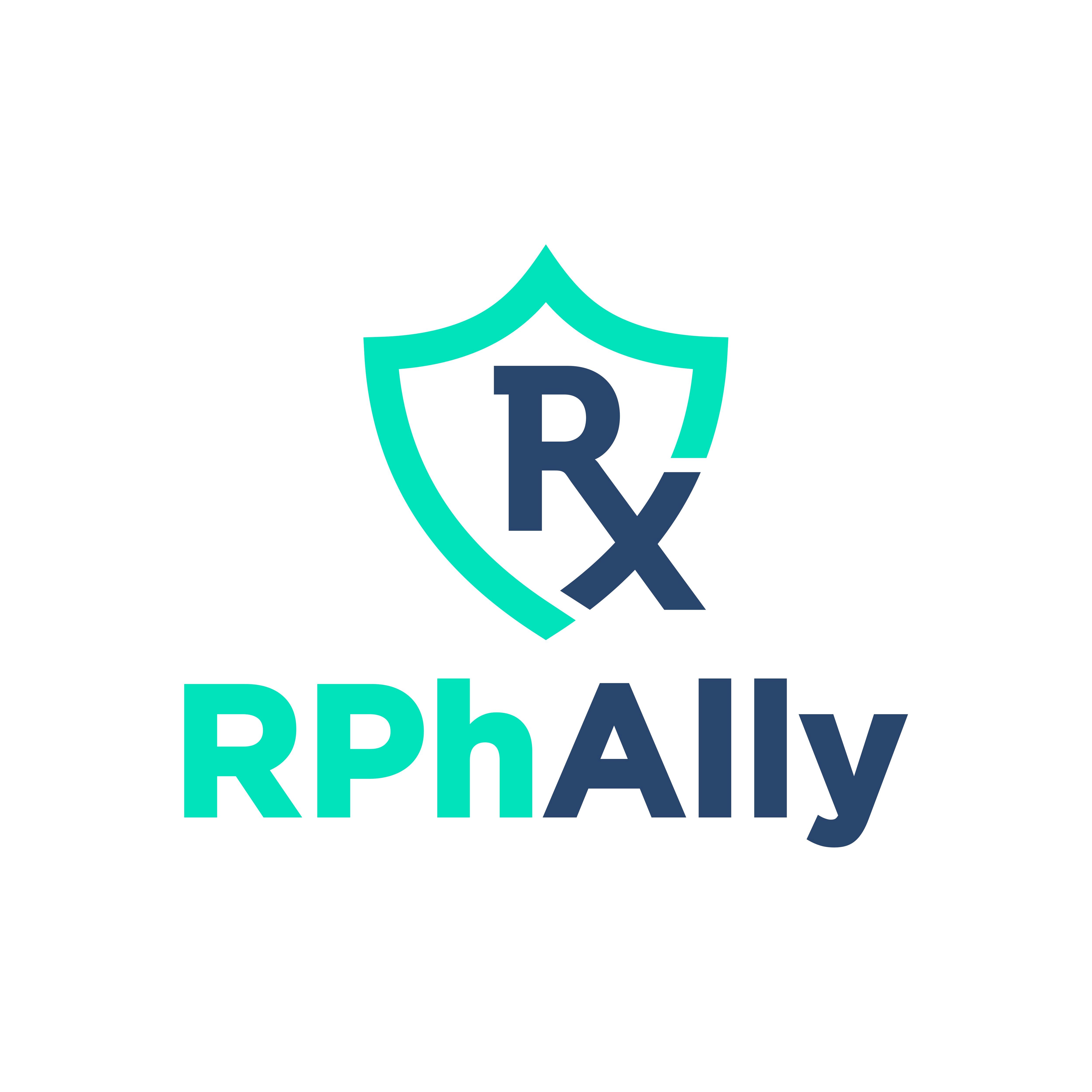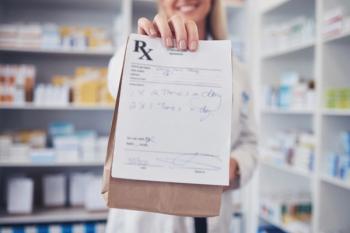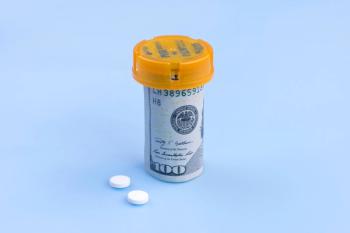
RPhCast, Episode Two: The A1C Possibility

Welcome back to RPHCast! This week, our hosts dive into the profitability of A1C testing, and how quick and easy these tests can help maximize your pharmacy's capabilities.
Kevin Walker: All right, Kristen, let's do this thing. How do I make money on A1C testing? And what what does it all look like? And by the way, Kristin is under the weather, and she's championing through it like Michael Jordan did when he got sick in the playoffs, so I'm excited.
Dr. Kristin Talentt: Yeah, I'm digging deep, but I have good information to share today. So I'm so glad you asked Kevin about profitability and A1C testing. So I have some numbers in front of me, if I'm looking to the side a little bit, it's because I'm looking at my numbers. But when you're doing an A1C test, again, reminder, because I'm always getting this question "Oh, wait, we're not setting to the lab?" No, we're talking about doing the test, with the person standing right in front of you, a simple finger prick. And you'll have your results typically in less than 15 minutes or so. And so what do we charge? A lot of people want to know, what do we even charge for that? Well, typically anywhere between 30 and $45. Let's err on the lower end, let's call it 30, you'll probably be making about $20 margin per test. And so I just want to kind of like, what do you think Kevin? Can I just like crunch through some different scenarios? If we were going to do X number of tests? Let's do it. So before I even get into the crunching of like, what does 30 tests look like? What does, you know, a year worth of tests look like? I want to emphasize the point that you as the pharmacist, you as the owner of your business, you are not doing these tests, you are making money doing something else while someone else is doing these tests. So that's the first thing is that we're utilizing the staff that we have to perform these services. That's the number one thing to keep in mind. Number two, is the whole process of doing an A1C test from start to finish, like communicating with the patient, booking the appointment, doing the test, delivering the results, and then maybe pitching them on other services, is going to take 10 minutes of time, like start to finish 10 minutes of time, if you use an online booking system, then that's even less because you don't have you know, Mrs. Jones on the phone that you're trying to get all of her information from and so on and so forth. So these numbers are based on 10 minutes of time that your other staff members are doing. And so if we were going to do 30 tests- the other thing before we get into that- is, I would pick your target market. Who is your target market? Because we can't target everybody at one time? It's impossible. You can't train your staff to communicate with everybody at one time. There's a bunch of different barriers to that. So pick one target market, are we just going to focus on patients who get Metformin from us? Beautiful. Okay. So how much Metformin do you dispense? Or how many patients are you talking to you as a consultant pharmacist who has diabetes, it could just be diabetes. I'm talking to anybody who has diabetes who doesn't want to be on medication. So then we look at the numbers. Like I said, if we said if we were on the low end and you did 30 tests a month, that's one test a day. Can we find one diabetic per day to come in and spend 10 minutes with them? That would equate to about $600 of profit per month. And just one test per day that you're not doing that takes less than 10 minutes. And then per year on that low end, it's over $7,000 of profit. And that doesn't factor in any other testing services that we're doing. It doesn't factor in any supplements that we're selling them. It doesn't factor in any consultation services that we're selling them. Everybody has this different perception of of money, right, Kevin? Like, some people are like "$600 a month, what can I do with that? I could hire another person, I could, you know, whatever." Other people are like "600 dollars, that's really not that much money." But to that person, I just want to say, if you start to look at this as the foundational piece that you're going to then talk to them about another service, what does that end up looking like? Like, are you able to sell another supplement that's going to give you another 10 or $20 per supplement? Like that, that's pretty easy. Like, it's just that easy. And so on the higher end, it could be $1,000 extra a month, if you were going to sell them at $45 per test or over 12,000 extra dollars per year, if you are going to sell at that higher end, and that's margin, that's after your actual test costs.
KW: Kristin, put me back in my store that I had when I was over in Brewster and had an employee only retail pharmacy. So I'm sitting there, I've got my patients in front of me, I've got my entire list, I just pulled out and ripped out some spreadsheets that show me like "Here, all my Metformin patients, here all my insulin patients, etc," right? But I've got all of my diabetics in front of me as my entire list. When I'm analyzing this list, and now you're telling me that if we can do one test a day, so that that means that one test a day, we would need to with A1C frequencies, be that one individual, how many times am I testing that one individual per year, in your mind? You and I know, here's what the schedule is, here's the number of months that you can look at, here's the ideal scenario of every three months you can get rechecked. But how often am I actually retesting those individuals? And how many people does that mean for me to fulfill that for an entire year?
KT: I'm saying non-controlled every three months. But in my mind, a non-controlled diabetic is somebody who's over like 5%, or you can even say maybe 6%. But really, if you dive into the studies, the lower we get that A1C obviously, we don't want to make them hypoglycemic or anything but the closer to five, that we get that A1C, it really is extremely beneficial for patients, for 1,000,001 different reasons that we could probably talk about a different time, but every three months, and the likelihood of that person on Metformin, being controlled, I think is pretty slim, because how often are they actually able to see their doctor? I don't know if I said on last week's session, but the average person gets to spend seven minutes with their PCP. Seven minutes, they don't have time to talk about what your A1C number should be, patients don't know what they are even shooting for. They're just trusting that their doctor is suggesting the solution to their problem, when really, there's so much more to it. And also, I don't think that that a lot of patients realize that it can be reversed in a lot of different ways.
KW: Yeah. So I mean, we were really looking at multiple times a year. So not just one test kind of deal, we're looking at two, three, maybe even four times a year, you can test a single individual. So your patient population, you know, the the note that Kevin was trying to lead toward is you don't have to literally have one person, a different patient every single day, like you're dividing that list by two, three, or maybe even four, you know, and you can fill that whole kind of population set out and develop that relationship. So that makes tons of sense. The other thing I want to plug in there for you, Kristin, cuz you've gotten to profitability and like what people think of money one way or the other. The one thing you've educated me on that I love is let's look at margins. Like you can spend 10 or 15 minutes of your staff doing this and make a margin of 20% or less. Or you could have them do A1C testing, add on additional services for margins that are closer to...
KT: I mean, $20 per test, but if you're going to do six tests in an hour, that's $120 that that that staff member just made you.
KW: Which you're purchasing for even less than that. So you're making almost 100% margin, you know.
KT: Oh, yeah, you're making you're making 200%, if not more, margin.
KW: There you go. I mean, I think there's the simple math to be able to say like, okay, that's 600 bucks, but think of what else you could have been doing with your time making much less for the investment which I love that you pointed out several times
KT: Absolutely. Absolutely.
KW: So, listen, I know we're running up on on time here, the big takeaway is really break down your list of like all the patients that you have be able to say like, "If I just did one one test today and start really simple" here's the math that you can be able to walk through, you can look at the $600 per month, $7,000 per year you're getting out of it. Also look at the margins that are there. And then your mind can start working it, how can I leverage the additional services, I can sell? Any other profitability like nuggets, you want to make sure that we plug into this one?
KT: Well, that that's just the beginning really is that's literally just, I'm just showing you what doing a simple fingerprick of one type of test can do for your business once a day. So what would it look like if you had an A one C come in, and a COVID, flu, RSV, and strep and like you became known as this place where people can come to get tested. And then we're not even talking about functional tests, like hormone panels and stool tests and food sensitivity panels and pharmacogenomics. Like what if you became known as the testing place? Because what I see when I'm working with my actual patients for functional medicine, is that they want stuff tested, and their doctors are telling them no, I can't do that. And I don't think it's any thing negative regarding the doctor, it's the health care system and how we're set up. They have to have a diagnosis code, they have to have a legitimate reason for ordering these different tests, so that the insurance company actually pays for it. Otherwise, the patient is paying out of pocket and just astronomical prices. And so anyway, that's my big vision is like how can we just turn into this like pharmacy health and wellness testing hub, if that's what you want to do, but testing just goes so beautifully with what we're already doing in pharmacy?
KW: Yeah, I mean, starting with A1C, the great kind of like tip of the iceberg, I think, get people involved and understand the profitability just from one test and how they can move the needle overall. But you mentioned something that I think is really worth repeating on, the system will only allow for you to be able to bill insurance X number of times with X number of diagnoses in place for them to get a lab test paid for, right? But a lot of times in the hospital setting, I always wish I had a baseline I wish I had a number to be able to reference that someone has not gotten labs drawn for 100 years, like literally someone is coming into the hospital never having labs done. And it's like, cool, where do we start from here? The great thing that you can be as a community pharmacy is you can be the source, you know, for a lot of those testing, you know, thoughts to go in. And that can be part of someone's medical record that they can benefit from later on, if anything were to happen. So, super helpful. I think the profitability is both in the investment into your community and the investment back into your store with just the overall margins that we're talking about. Because let's not kid ourselves margin for drugs, lots of drugs are not going in the right direction, you know, overall, or the other ones have stagnated that inflation is now bringing them down. And so trying to find highly profitable things like A1C that you're getting 100 to 200% margin on, no brainer.
KT: Yeah, absolutely. And again, just to emphasize one more time, it's literally the tip of the iceberg. They this overflows it turns into this huge snowball effect. Let's get our processes and and policies in place, and our workflow how are we actually going to do this, what are the conversations going to look like? How are we going to get paid? What are we going to charge? Do that for one test, and then it just explodes if you stick with it and be consistent.
KW: Love it. Love it, Kristin. If anybody wants to learn more about point of care testing and lab services, you know where to come, head over to RPhAlly, jump on Kristin's channel and become a member with her. Get your questions answered there, join what Kristin is doing. If you're somebody out there and you're saying $600 isn't a lot of money and I don't want to take that fantastic you just send it over to Kristin and I will be able to help you get a program up and running and we'll basically run it for you. So just let us know how you want us to do that. Anyway all jesting aside, you guys have a wonderful rest of the day and we'll be talking to you soon.
KT: Absolutely, bye guys.
Newsletter
Pharmacy practice is always changing. Stay ahead of the curve with the Drug Topics newsletter and get the latest drug information, industry trends, and patient care tips.





















































































































































